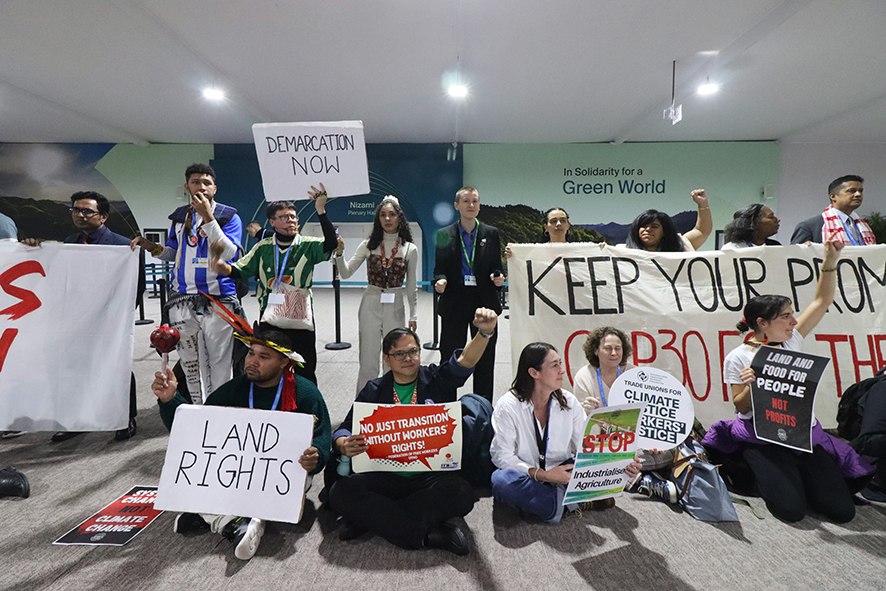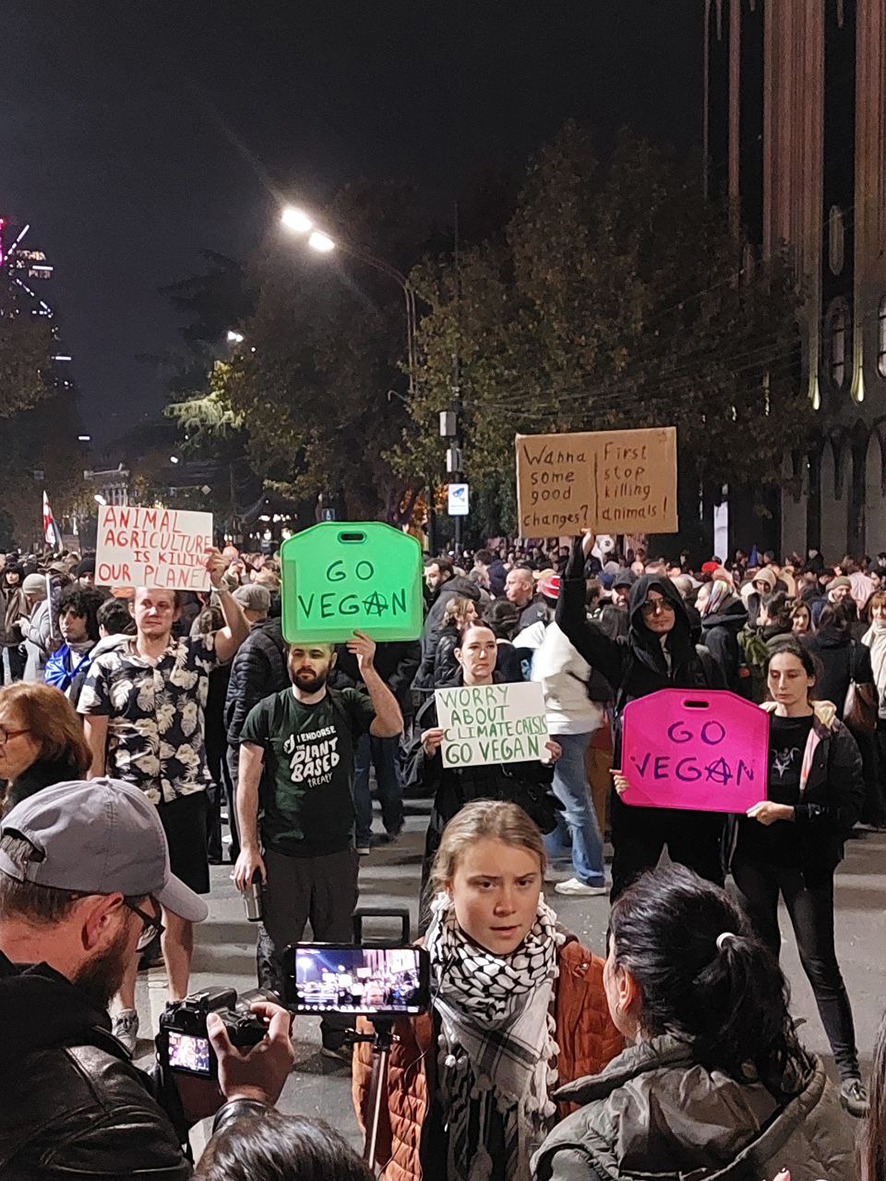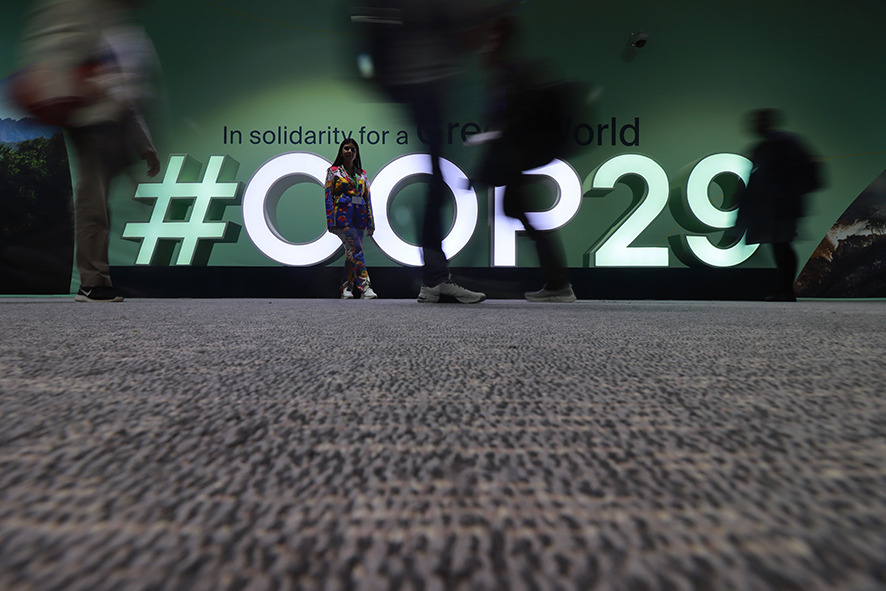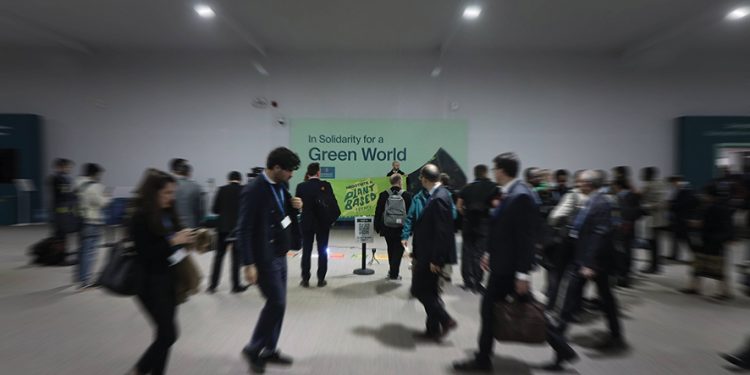With this year on track to become the hottest on record and the first to surpass 1.5°C of global warming, did COP29 meet its climate targets? The United Nations Climate Change Conference, held over two weeks from Monday November 11 in Baku, Azerbaijan, concluded on Sunday, November 24, running two days longer than scheduled.
The conference took place at the Baku Olympic Stadium, a venue that, despite its name, has never hosted the Olympic Games. Around 60,000 delegates attended, most of whom flew in, likely exceeding their personal carbon budgets for the year. Notably, Greta Thunberg adhered to her no-fly policy and instead organized a protest in Tbilisi, against COP29 taking place in Azerbaijan. The conference venue featured a stunning glass entrance and sounds of Azerbaijani folk and classical music to welcome delegates. It also provided highly efficient bus shuttle services and enlisted 3,000 volunteers—selected from 16,000 applicants—who underwent months of training to assist throughout the event.

In terms of regional developments, Georgia and Azerbaijan discussed establishing a green energy corridor across the Black Sea to connect with the European Union. A new report, titled Co-operation in North-west Azerbaijan and Eastern Georgia, was also released, aiming to address wildfire risk management. Additionally, Georgia made its debut with a pavilion at the conference.

COP29 was dubbed the “Finance COP,” with climate finance being a key topic of discussion. A protestor advocating for workers’ rights at the Global Day of Action outside the Plenary Hall stated, “The Global North has to pay up for all the damage it has done to the planet!” Poorer nations, which contribute the least to emissions, are often the hardest hit by climate change, and are calling for accountability from the wealthier nations responsible for most emissions. Previously, a commitment was made to mobilize $100 billion annually by 2020 to support developing countries (later extended to 2025). At COP29, however, parties agreed to a “New Collective Quantified Goal for Climate Finance,” aiming for developed nations to mobilize $300 billion by 2035. Representatives from the Alliance of Small Island States and Least Developed Countries walked out during the meeting, dissatisfied with the text, with one representative stating, “No deal is better than a bad deal.”
One of the key outcomes of COP29 was the agreement on a high-integrity carbon market under Article 6 of the Paris Agreement. This includes transparency requirements and protections for Indigenous rights. However, Carbon Market Watch raised concerns about the accountability of the agreement, noting the lack of deadlines and penalties for non-compliance. One investigation reveals that less than 10% of carbon credits lead to real emissions reductions.

A major setback at COP29, however, was the lack of progress on phasing out fossil fuels. The conference saw the participation of 1,773 fossil fuel lobbyists, including representatives from fossil fuel companies within national delegations. Big Agriculture was also well represented, with 204 lobbyists, 40% of whom were part of country delegations, gaining direct access to diplomatic negotiations.
Another disappointment was the failure to make meaningful progress on transforming food systems. Food accounts for approximately one-third of total greenhouse gas emissions, and animal agriculture is responsible for one-third of methane emissions. Yet, food systems were not given the attention they deserve at COP29. Steven George, an Earth Observation Engineer, highlighted the importance of agricultural transformation during a press conference on November 22, stating: “While the phase-out of fossil fuels is absolutely necessary, the IPCC Climate Models assume there will be a transformation of Agriculture, Forestry, and Other Land Use (AFOLU) from a carbon source to a carbon sink by 2030. Even if we halted fossil fuel use today, emissions from our food system alone would still push us beyond the 1.5°C and 2.0°C targets.”
Carbon sinks, which are crucial for absorbing CO2, are collapsing (one article finds that almost no CO2 was absorbed by plants and soil last year), and scientists like Johann Rockström have been calling for a food systems transition. However, world leaders seem reluctant to move away from the luxury of animal products, despite the unsustainable environmental impact.
Interestingly, when climate-damaging animal products are served at climate conferences, it rarely sparks controversy. COP28 in Dubai provided an array of sustainable, plant-based food options, including an entirely plant-based food park. In contrast, COP29 took “huge steps in the wrong direction,” according to Kimmy Cushman, scientific advisor for the Plant Based Treaty campaign. Despite plant-based organizations having meetings with the conference organizers to ensure inclusive, climate-friendly vegan options, delegates found the sustainable food offerings severely lacking. Animal products were even mislabeled as vegan, with dairy cheese, and even salmon marked as vegan, as well as chicken and canned beef labelled as vegetarian, which the staff later claimed was due to a “printing mistake” and a shortage of labels. Furthermore, plant-based milks for coffee came with an additional surcharge of up to $3.50, while coffee itself cost around $10 per cup—a frustrating barrier for those wanting sustainable options or those who are lactose intolerant. After the organization ProVeg International met with the catering organizers, the vegan food labeling was corrected, and more vegan options were made available during the second week of the conference.

On a positive note, the only vegan café in Baku, Manipura Café, endorsed the Plant Based Treaty, calling on COP29 to negotiate an agreement to transition to plant-based food systems. “We want the whole world to be vegan,” says Mammad, the café manager. This raises an important question for climate justice—when we speak of justice for all, does that include non-human animals?
Every year, billions of sentient animals are bred and killed for food. Animal agriculture is responsible for 83% of land-use change, yet it provides only 18% of the world’s calories. We are producing more than enough food to feed the entire planet, but much of it is fed to farmed animals for products that are not necessary for human health and, in fact, are harmful. Meanwhile, 20,000 people die from hunger every day. Animal agriculture also comes at the expense of the physical and mental health of slaughterhouse workers, who endure horrific working conditions.
As COP30 approaches in Brazil next year, it will mark 10 years since the signing of the Paris Agreement. It’s clear that while progress has been made in some areas, much work remains to be done to address the climate crisis comprehensively, including transforming our food systems and ensuring that all sectors of society—human and non-human—are included in the conversation.
By Team GT














